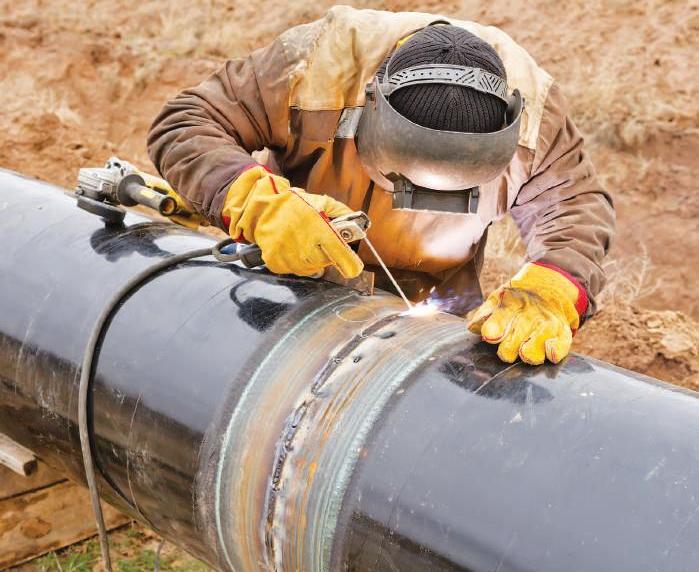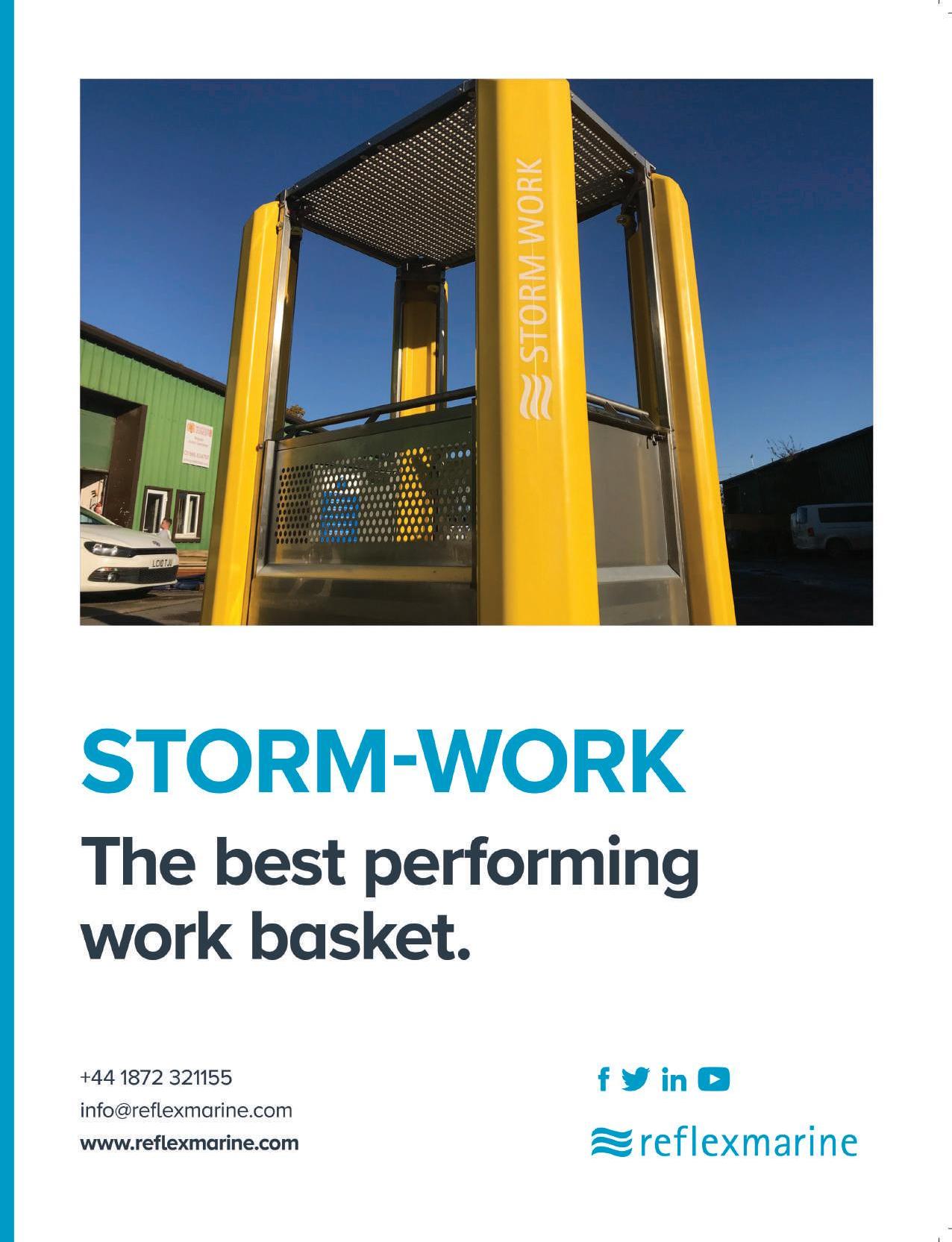
8 minute read
Digital transformation in the pipeline industry
A Virtual Pipeline Summit held by Germany’s EITEP Institute on 30 June provided a forum to discuss the potential of digitalisation in the pipeline industry. Louise Waters reports.
AMID THE GLOBAL pandemic, pipeline operators in particular must adapt their processes, procedures and staff to more extensive digitalisation in order to meet supply and safety responsibilities. Pipeline operators need to shift staff to crisis management tasks, which leaves a large gap in the capacity to perform business-as-usual operations. The ability of pipeline operators to leverage process automation, machine learning and artificial intelligence capabilities has become essential. In addition, pipeline companies around the world are more vulnerable than ever to cyberattacks as a result of the pandemic. As attackers try to take advantage of the situation, the ability of all companies to defend themselves against this threat has become critical.
These aspects were covered during the event in several live presentations from DNV GL, ILF Consulting Engineers, BIL, Hifi Engineering, Baker Hughes, ROSEN and Vallources, and a live panel discussion with participants from Shell UK, Energinet Denmark, BIL and Baker Hughes.
In a keynote presentation on ‘The role of digitalisation in future-proofing the pipeline industry’, Rob van de Spek, head of risk management advisory and digital lead, Continental Europe, Middle East and India, DNV-GL – Oil & Gas, discussed how digitalisation is enabling safer and more efficient pipeline operations, stressing the importance of data quality and availability for improved decision-making.
“Pipeline operators have to balance conflicting drivers ranging from opportunities and costs to performance and risk,” he said. Industry 4.0 enablers ranging from AI, IoT, cybersecurity and cloud computing to augmented reality and big data analytics, can help operators to improve performance and reduce TCO while staying in control of risks. A global oil and gas survey carried out by DNV GL, which included 100 global pipeline operators, highlighted digitalisation priorities as data platforms and managing data across
Digitalisation can bring huge benefits for pipeline integrity.
different operations; cloud-based applications; and, increasingly, AI.
“If you’re looking at the topics which are important, it’s about data quality and availability of data within those platforms to ensure that we can take decisions based on quality data and the right data,” he said.
However, while there is a concensus
amongst pipeline operators with regard to the importance of digitalisation, technology and cultural barriers are preventing the industry from accelerating as fast as it would like. In particular there is a strong demand for AI and data science specialists with domain expertise, he added.
“We see this as one of the critical factors in reaping the benefits of this kind of technology,” stressed van de Spek.” While we have ambitions and priorities, we also need to have the capabilities to make it happen.”
He highlighted the importance of breaking down information silos; creating platforms to allow the management of information and data related to the pipeline ecosystem and operations; spanning operational boundaries with those platforms; and advancing pipeline
analytics to enable decisions to be made based on the available data.
By using machine learning, AI and algorithms, valuable information hidden in large volumes in silos of data and documents can be extracted to enable companies to take more informed decisions, eg on inspection regimes, maintenance programmes and strategies, using embedded algorithms that can take real-time decisions.
Van de Spek presented two examples where DNV GL has applied this technology, the first relating to Corrosion Under Insulation (CUI), one of the major issues plaguing the oil and gas industry. “We have developed with a number of companies CUI Manager, a dashboard based on data science and machine learning techniques which allows you to identify the risks and threats with regard to CUI. We work with certain stakeholders to ensure the data availability for the algorithms is in place to make decisions based on this kind of assessment.”
In another example, DNV GL is looking to use machine learning and AI to predict flow meter errors to reduce calibration costs.
Critical factors
To maximise the potential of these enablers, certain critical factors need to be addressed, said de Spek. First, there is a need to be realistic about the business value and ROI and the effort required to ensure the algorithms perform as they should.
The availability, volume and quality of training data is critical; a lack of this data will affect the quality of the algorithms and the accuracy of outcomes.
This is related to the lack of integration in existing systems and processes. “Those algorithms and those techniques cannot provide the maximum benefit if we are not able to extract the data from the different existing systems and processes. This requires we integrate the different legacy systems from the different parts of the organisation and bring that data within one platform in which we can use these types of algorithms. We must focus on getting the data into the platform, cleaning it up and ensuring we can use it as training within those algorithms.”
Another important factor is assurance of the quality of the algorithms.
“If we take decisions which will have an impact we have to ensure the algorithms are performing as they should. So assurance of algorithms for AI and machine learning is a growing domain in which we see a strong need. The same holds with regard to the explainability of algorithms, because if they can’t explain why they have come to that outcome, we see a lack of trust,” he continued.
“Last, we see a strong need with regard to data scientists and AI specialists with domain expertise. We have to develop these capabilities within the pipeline sector and more broadly. It’s a combination of being able to apply these techniques in integrity analytics or other domains, with a strong domain expertise of people who understand our operations and assets.
“To use the maximum potential of data science, AI and machine learning, we have to ensure we not only build Industry 4.0 but also trust 4.0, in terms of sensor quality, data quality, algorithm assurance, the competencies of staff and the business case, but also integration into a pipeline ecosystem which ensures we are breaking down information silos and spanning operational boundaries,” van de Spek concluded. “These are the major critical factors for using these technologies within the pipeline sector, to reduce the total cost of operations.”
The following panel session discussed further examples of how digitalisation has enhanced operations, as well as technical and human capital issues such as aligning people and technology, and the impact of the COVID19 pandemic.
Andy Studman, pipeline and subsea team lead for Shell UK, said that Shell has obtained a lot of value from building a digital twin of its offshore gas pipeline network, which brings gas from the North Sea for onward distribution to its customers. This has enabled schedulers to more easily work out the implications and explore the various scenarios in the case of a process upset or facility coming offline, for example.
“By building the digital twin with the associated modelling the scheduler can do that in close to real time, giving us value in managing changes in product streams, managing our shipping schedules, making sure opportunities to maximise revenue are not missed, and mitigating the downside of missing production targets. It’s made a step change difference, delivering thousands of tons more product that we would have otherwise been able to do.”
Studman said that Shell had started moving into the digital space around 12 years ago, combining data into one platform, which had resulted in improved performance and efficiency. A good example has been in the integrity space, where bringing all the data together, from the acquisition data and inline inspection data to the risers inspection, seabed inspection and cathodic protection data, and making it available on mobile platforms for corrosion engineers and integrity engineers, has been a “step change forward’ for corrosion and integrity assessments.
“It has improved decision making, helped engineers to make recommendations for improving and maintaining integrity faster and in a more efficient way, reduced waste and reduced errors,” he said.
Security considerations
Pierluigi Meloni, engineering manager for Industrial Control Systems, Baker Hughes, discussed some of the security issues relating to remote access to control systems such as pipeline systems.
“During this crisis many infrastructure providers, including pipeline providers, have moved to remote working arrangements in line with social distancing guidelines, which in some cases have resulted in implementing remote access to control systems and infrastructures originally designed to be operated locally on premise, so potentially lacking security features,” he said. He highlighted a recent case in the USA where a network gas compression facility had experienced complete loss of view and operation because of ransomeware spreading over the HMIs in the plant, resulting in a twoday shutdown and therefore loss of production and revenue. “Risk comes from the fact that the technologies are available to everyone but the IT skills in the OT industrial control system industry are not yet fully developed,” he said.
He recommended applying good IT common practices such as avoiding connecting directly from one network to another, using a jump host or jump servers, applying multifactor authentication, configuring everything to provide minimum access for the task that has to be done, and disabling copy and paste functionality from remote desktop. “These are simple things that can save days of headaches.”
Hannah Davidsen Jensen, senior digital business developer at Energinet, addressed some of the human and HR issues related to the readiness for more advanced digital processes, noting that many great digital initiatives had made disappointing progress as often the “classical operational backbone is not as robust as the organisation thinks.”
“A lot of companies around the world, including in the pipeline industry, want to move to digital platforms, but business processes are not completely aligned with technology,” she remarked. “There needs to be a business case, collaboration, transparency, but it requires everyone to work in new ways, and you can’t change that from one day to the other.” She advised working systematically to improve processes while engaging staff throughout the change process. More work needs to be done to strike the right balance between autonomy and alignment, allowing freedom for innovation, she suggested. n












